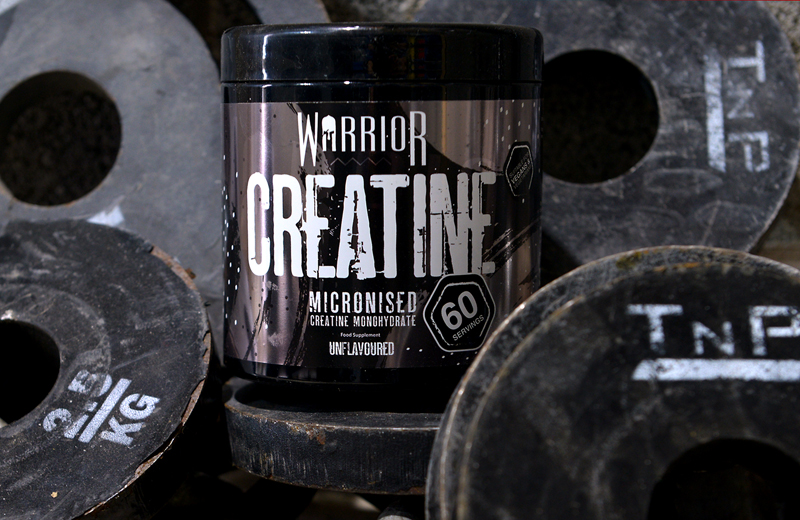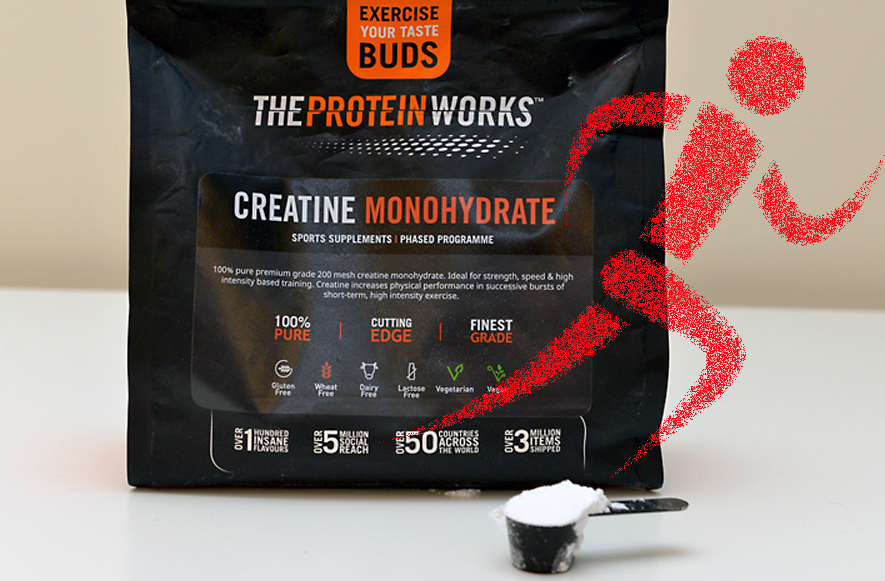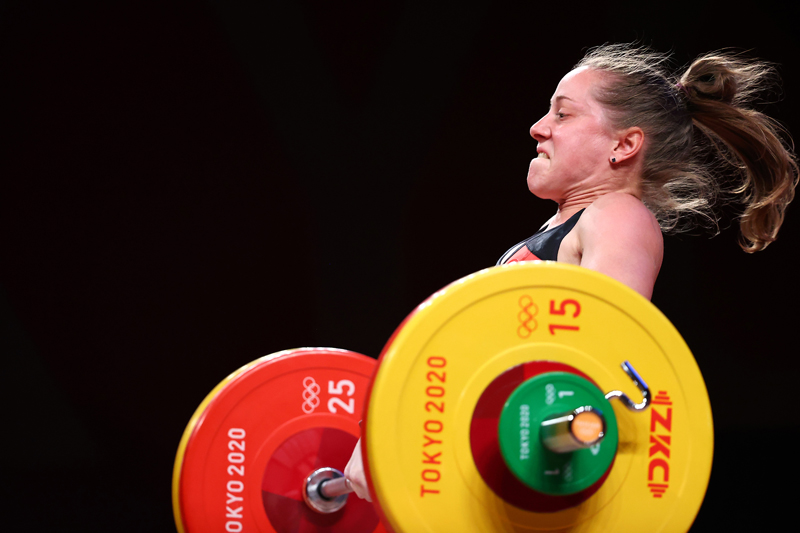Back in the ’90s, medium-chain triglycerides (MCTs) were popular as energy and fat loss boosters. However, evidence to support these claims was never really forthcoming and, as a result, MCTs faded into obscurity. But, according to Andrew Hamilton, maybe we’ve been too hasty in discounting their potential benefits.
For many sportsmen and women, the three holy grails of sports nutrition are: increased strength, more energy and lower body fat. Increased levels of strength and energy are beneficial to all athletes, while lower levels of body fat are frequently advantageous to athletes, where strength-to- weight ratio is important.
Back in the ’90s, MCTs were seen as a potential route to two of those aspirations – increased energy availability and lower levels of body fat and, as such, became popular – initially with the bodybuilding community, but later with some endurance athletes, too. However, like so many other products in sports nutrition, the scientific reality of MCTs seemed wanting in the light of the (often extravagant) marketing claims, and they subsequently fell from favour. But, perhaps that’s about to change, as a rash of new studies seems to suggest that MCTs might offer benefits after all, particularly when it comes to increasing fat loss.
What are MCTs?
MCTs are a class of fatty acids occurring naturally in oily foods. Like all triglycerides, MCTs consist of a glycerol ‘backbone’ with three fatty acid molecules attached (see figure 1). These fatty acid molecules consist of carbon chains that are commonly around 18 atoms long. However, in contrast with ‘long-chain’ triglycerides, in MCTs the carbon chains are only around 6-12 atoms long.The shorter fatty acid chain in MCTs alters the biochemical properties of these oils – they require far less energy for uptake and storage in the body and, as a result, they’re easier to digest and absorb than ordinary fats(1,2). This explains the development and use of MCTs in the 1950s as an alternative food source for patients who were too ill to properly digest normal fats and oils, and why they’re still used today(3).
There are foods naturally rich in MCTs. One good natural source is coconut oil, although palm oil contains small amounts, too, as does milk fat. However, in most of these oils, the percentage of actual MCTs is relatively low compared to long-chain triglycerides, so commercially available MCT supplements undergo a process called ‘fractionation’, whereby the MCTs are separated from the other oils, and then concentrated.
MCTs and athletic performance
The role of MCTs in improving nutrition in hospitalised patients, particularly those with critical or malabsorption conditions, has long been documented(4-6). However, it wasn’t long before sports scientists began to wonder if MCTs could offer a performance edge to athletes. This is because MCTs are more rapidly absorbed by the body than longer-chain triglycerides, and more efficiently converted into fuel for immediate use by organs and muscles.In particular, (and unlike long-chain triglycerides), MCTs do not require the presence of an amino acid called carnitine to transport them into the mitochondria, the energy producing factories that lie within every one of our cells. The result is a more rapid conversion to a molecule called acetyl-CoA, which is a key intermediate involved in the production of energy (see figure 2).
The theory was that if MCTs could be converted to energy so readily and boost the key energy intermediate acetyl-CoA, then maybe supplementing MCTs could produce an ergogenic effect, by boosting energy output and, by sparing carbohydrate, also extend endurance.
An early study on the swimming endurance of mice seemed to provide evidence for this effect(7). The mice were fed a diet containing 80g of MCTs plus 20g of long-chain triglycerides (LCTs) per kilo of their dietary feed, for six weeks, while mice fed a diet containing 100g of pure LCTs per kilo were used as controls. When forced to swim to exhaustion, the MCT-fed group showed significantly greater swim capacity than the control group (89.5 vs 80.2 minutes). Moreover, the researchers also found that enzymes associated with acetyl-CoA and the Krebs Cycle were boosted, as predicted by the theory.
In the same year as the mice study, a Dutch study looked at the effects of supplementing MCTs, with or without carbohydrate (8). Eight well trained athletes cycled 4 x 180 min at 50% maximal work rate, and drank either a pure carbohydrate, pure MCTs or carbohydrate/MCTs solution. The results indicated that more MCTs were oxidised when ingested, in combination with carbohydrate, and that the oral MCTs could serve as an energy source , in addition to glucose during exercise, because the metabolic availability of MCTs was high.
Fly in the ointment
However, while MCTs became popular as a sports supplement, there was a fly in the ointment – namely that human studies on MCTs and performance were turning up either inconclusive or negative results.For example, the same Dutch group above carried out a study the following year to see whether the glycogen status of muscle in cyclists altered the metabolism of ingested MCTs – more specifically to investigate whether more MCTs were converted to energy when glycogen stores were low (ie when there was limited carbohydrate availability)(9).
The cyclists were split into two groups. One group performed pre-trial exercise to lower leg muscle glycogen, before ingesting MCTs, while the control group maintained high levels of glycogen. During the trial itself, the cyclists ingested either pure carbohydrate, or carbohydrates plus MCTs. The results showed that MCT ingestion didn’t result in increased fat oxidation when muscle glycogen was low, neither did it spare carbohydrate.
An Australian study looked at the effects of carbohydrate, or carbohydrate plus MCT ingestion on cycling time trial performance and again turned up a blank(10). Eight endurance trained men completed a time trial as quickly as possible while consuming one of three solutions:
- a 6% carbohydrate solution;
- a 6% carbohydrate plus 4.2% MCT solution;
- an identical-tasting placebo (no carbohydrate or MCTs).
A number of other studies on the possible ergogenic effects of MCTs also drew a blank. For example, a US study looked at the effects of long-term MCT supplementation on endurance running performance (as opposed to acute supplementation immediately before or during exercise) and found that taking MCTs produced no improvement in VO2max, nor did it extend time to exhaustion or change blood chemistry (11).
Likewise, running guru Professor Tim Noakes, and his team, found no benefits of MCT supplementation and ultra-endurance exercise performance, in a fairly recent study on eight endurance-trained cyclists(12). Not only was there no improvement in VO2max, the hourly sprint and time-trial times were slower in the MCT trial compared to carbohydrate. To make matters worse, half the subjects experienced symptoms of gastrointestinal distress when they took MCTs, a side-effect that has been noted in other studies – studies where, yet again, no performance benefits were observed(13,14).
MCT fat loss benefits
The evidence that acute MCT supplementation can enhance performance is pretty non existent. But does this mean we should dismiss MCTs all together? Well, maybe not, because a number of recent studies are suggesting that MCTs could offer significant benefits for those trying to lose or maintain lower levels of body fat.An early inkling came back in the early ’90s, when researchers investigated the effects on hospitalised patients of five days of MCT supplementation as part of a completely intravenous diet(15). Compared with an ordinary (LCT) fat infusion, MCTs increased resting energy expenditure, oxygen uptake and, importantly, fat oxidation.
However, it was some years later, in an environment of rising incidence of obesity, that researchers began to revisit MCTs as a possible method of fat loss/control. A Canadian study fed 19 healthy, overweight men isocaloric diets, rich in either MCT or long-chain triglycerides (as olive oil) for periods of four weeks each(16). The researchers looked to see what effects, if any, MCTs would have on body composition and energy expenditure (30 minutes before, and 5.5 hours after, each meal).
Compared to olive oil, the MCT supplementation resulted in increased energy expenditure, an increase in fat oxidation, and a reduction in body weight. Interestingly, they also discovered that the weight losses were greatest in those subjects carrying the least amount of body fat.
In the same year, a double-blind randomised 12-week-study, carried out by Japanese scientists, looked at whether a mixture of both MCTs and LCTs could decrease accumulation of body fat in healthy humans(17). Eighty-two subjects consumed a test bread (containing 14 g of the oil mix containing 1.7g of MCTs) daily at breakfast, while the control subjects consumed bread made only with LCTs. Compared to the LCT-only group, significant decreases in body weight, body fat, subcutaneous and visceral fat, were noted in the mixed oil group. As a bonus, a significant decrease in serum total cholesterol was also noted in the mixed oil group.
Recent research
More recent studies have continued to throw up positive findings on MCTs and fat loss. The same Japanese group above, carried out a rigorous double-blind crossover study last year on the effects of a liquid meal containing both MCTs and LCTs on diet-induced thermogenesis (raised resting energy expenditure via an increase in heat production)(18).Twenty subjects consumed isocaloric liquid meals, containing either 14g of canola oil (pure LCT) or an MCT/LCT mix containing about 12% MCTs. Oxygen and carbon dioxide production were measured, allowing resting energy expenditure to be calculated, and the increase in thermogenesis for 6 hours after ingesting the MCT/LCT mixture was significantly greater than with pure LCTs.
Another study carried out last year looked at how short-term feeding of high levels of dietary MCT affected energy expenditure and post-feeding fat oxidation rates in eight normal-weight, pre-menopausal women(19). The women were split into two groups and followed a diet containing either 61% or 1% of total fat energy from MCTs with the remaining fat energy intake from LCTs. After three weeks, the diets were reversed (ie those who took high MCTs swapped to high LCTs and vice-versa). Although there were no significant differences between resting metabolic rates or post-feeding energy expenditure, fat oxidation rates for the MCT-rich diet were significantly greater than that for the LCT-rich diet, throughout the 5.5-hour post-feeding period.
Yet another study, carried out last year, found that, compared to ordinary corn oil (LCTs), feeding 18g per day of MCTs reduced body weight and waist circumference in 40 moderately overweight free living type 2 diabetic Chinese subjects(20). Moreover, like the study above(17), the researchers also found that MCTs produced a healthy drop in blood cholesterol levels.
More recently, US scientists investigated whether the consumption of oil rich in MCTs improved body weight and fat loss compared with olive oil, when consumed as part of a weight-loss programme. They have just published their results(21).
Forty-nine overweight men and women, aged 19-50 years took part in the study and consumed either 18-24 grams per day of MCT oil, or the same amount of olive oil (LCTs) as part of a weight-loss programme for 16 weeks. All the subjects received weekly group weight-loss counselling, and body weight and waist circumference were also measured weekly. Adipose tissue (fat) distribution was assessed at the start and end of the study, using a highly accurate body composition analysis scanning technique known as dual-energy X-ray absorptiometry (DEXA).
Taking the MCT oil, resulted in lower endpoint body weight than did olive oil, with MCT subjects losing around an extra 1.7kgs compared to olive oil subjects. The researchers also found that trunk fat mass, total fat mass and intra-abdominal adipose tissue, were all significantly lower in those subjects who had taken MCT oil compared to those taking olive oil.
The researchers concluded that the consumption of MCT oil, as part of a weight-loss plan, improved weight loss compared with olive oil, and went on to suggest that ‘MCTs can thus be successfully included in a weight-loss diet, especially as only small changes in the quality of fat intake seem to be useful in enhancing weight loss’.
Implications for athletes
What are the implications here for athletes and should they impact on your current dietary practices? The first thing to say is that the evidence for using MCTs as an ‘ergogenic’ supplement, to prolong endurance or improve performance, is pretty much non-existent. However, maybe by focusing on this aspect, we’ve missed the bigger picture – perhaps MCTs could be a useful dietary addition for athletes trying to lose or maintain body fat?The evidence in this respect seems promising, and far more robust than that for CLA, which is popular among some athletes as a ‘fat burner’, despite most of the positive studies being those conducted on animals only. And, while some athletes might balk at the thought of actively adding more fat to their diets, the 20g per day used in these studies is a modest amount, which would displace no more than 200 calories from other vital dietary components, such as carbohydrate.
Like all supplements, MCTs are not cheap– however it’s interesting to note that some of these studies demonstrated a weight loss effect with an MCT/LCT mix(17,18), which would have contained lower proportion of MCTs than commercially available MCT supplements. For those of you who are inclined to experiment, it’s worth adding here that coconut oil is relatively inexpensive, and has an MCT content that compares very favourably with the MCT content of a 12% MCT/LCT mix (see table 1).
However, it’s also worth stressing that MCTs are a rich source of energy (containing eight calories per gram), so, if you want to experiment, substitution is the key, not simply adding large amounts of calories to your diet in the form of MCTs. And, as ever, all the usual caveats apply – there’s no substitute for a healthy, carbohydrate-rich diet based on whole, unprocessed, foods with an eye on total energy intake!
References
1. New Eng J Med l969;280:l045-58
2. Senior JR, ed Medium chain triglycerides. Philadelphia: University of Pennsylvania Press, 1968:39-49
3. J Food Lipids 1996 vol 3 (4) 251-257,
4. Nutrition 1995 May-Jun;11(3):275-84
5. Intensive Care Med 1993;19(2):89-95
6. Nutrition 1996;12:766-771
7. J Nutr 1995 Mar;125(3):531-9
8. J Appl Physiol 1995 Sep;79(3):756-62
9. J Appl Physiol 1996 Mar;80(3):949-54
10. J Appl Physiol 2000 Jan;88(1):113-9
11. J Sports Med Phys Fitness 2001 Jun;41(2):210-5
12. Int J Sport Nutr Exerc Metab 2005 Feb;15(1):15-27
13. Int J Sport Nutr 1999, 9: 35–47,
14. J Appl Physiol 2006; 101: 1733-1743
15. J Parenter Enteral Nutr 1991 Jan-Feb;15(1):27-31
16. Int J Obes Relat Metab Disord 2003 Dec;27(12):1565-7
17. Asia Pac J Clin Nutr 2003;12(2):151-60
18. J Oleo Sci. 2007;56(6):283-7
19. Can J Physiol Pharmacol 2007 May;85(5):507-13
20. Metabolism 2007 Jul;56(7):985-91
21. Am J Clin Nutr 2008 Mar;87(3):621-6
22. Obes Res 2004 Apr;12(4):599-611










